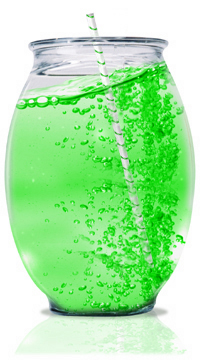 Part 1
Part 1
I am often asked about the green movement and its place in
businesses. Is it a fad or is it here to stay? Does it make any sense for a
business to market themselves as a "green” company making "green” products or
providing services in a "green” manner?
Let me start by saying that I have worked with a lot of
businesses over the years and I have yet to meet the CEO who is all about
polluting the earth. Attitudes have changed. When the ecology movement began back
in the 60’s, there was not a lot of regulation on industrial or consumer waste.
Whatever you wanted to burn, put into the ground or dump into a local body of
water was up to you. I remember visiting Toledo, Ohio as a child and seeing
hundreds of dead fish floating on top of the Lake Erie shoreline. With the
creation of the Environmental Protection Agency in 1970, all of that began to
turn around. In the past 40 years, government regulation has mandated
compliance with pollution standards. Like it or not, this created a degree of
accountability that has helped clean up the environment around us. And with
that has come a level of green acceptance among our society, including
business.
However, the latest rendition of the ecology movement moves
beyond dead fish on Lake Erie. We are now concerned with the use of certain
fuels deemed clean over the ones that are defined as dirty. We believe that
paper is bad and electricity to power a computer is better, that is unless the
electricity is produced by coal-fired turbines. It would be better if it were
produced by water-driven turbines at a dam. That is, unless the dam has
destroyed the natural habitat of the three-legged chirping cricket. In that
case, just print the paper, but make sure it has a recycled post-consumer
content of at least 25%. The new green push is to persuade every man, woman and
child to value businesses who show themselves to be "green” and steer clear of
businesses who are not. This is where I get the questions from business
leaders. The last thing they want is to be left standing on the outside of the
circle when green can be used to gain a marketing advantage. It is just that
the line defining being "green” seems to be an ever-moving standard. Just when
you thought you had been properly coronated as a "green” business, you find
that your carpet was produced by a company over 500 miles away. The amount of
fossil fuels burned to get that carpet under your feet has you black listed
instead of green listed.
So what is a business to do? If you want to take advantage
of the greening of our society as a marketing tool, then you need to let your
target market define the green line for you, not a group of idealists bouncing
a giant inflatable globe on Earth Day. The two marketing questions you should
be asking are how much do your customers expect and how far are you willing to
go? My first suggestion is that you define who is in your target market and
find out what they value. For instance, if you say that you are a green
business because you recycle soda cans, plastic bottles and waste paper, but
your target market expects you to use gas heat instead of heating oil, you are
barking up the wrong green tree.
If you really want to make a statement about being "green,”
you need something to back up your talk. Many companies have produced an
environmental sustainability report to make their green efforts part of the
public record. Most sustainability reports have a progression of business
activities that can be broken up into the following categories. Note that each
category is progressively more difficult to achieve.
1. Conserve
resources. This includes reducing your power usage by turning off
equipment and lights when not in use; purchasing energy efficient office
equipment; and recycling common consumable products, such as paper,
plastic, glass and aluminum cans.
2. Land,
air and water ecology. This takes into consideration EPA regulations;
giving consideration to ecological buffer zones around your business, such
as woodland areas and wetland habitats; adaptable reuse of old properties
into wildlife refuges, parks, reforestation, etc. It also includes giving
employees time off to take part in clean up efforts in the communities in
which you operate.
3. Energy
use efficiency in manufacturing and delivery of your product. Are you
using clean fuel to produce your product? Is there a way to reduce your
use of fuel, possibly by upgrading your mechanical equipment and
maintaining it properly? Are you delivering products in full loads or
making multiple trips with partial loads?
4. Producing
a green product. Is there a way to reduce waste in your production process?
This may mean recycling your waste or limiting the amount of natural resources
it takes to produce your products. Are you using recycled content instead of
natural resources for your raw materials?
5. Purchasing
green alternatives to traditional materials. Examine your raw materials and see
if there are replacement materials that are cleaner to produce than traditional
materials.
6. Take
leadership in greening your industry. This includes giving guidance and support
to the green efforts of the trade associations to which you belong.
7. Committing
to Green Audits by outside groups. This can be a slippery slope. Choose your
group carefully. In many cases, there are such oversight groups within trade
associations.
Not all of these steps are required to make a sustainability
report. However, they give you a place to begin the conversation with your
clients to help define the green line.
Before you take a sip of the green goo, you should give your
due diligence to a market survey to find out what your target really thinks is
green and what is not. Then market yourself appropriately.